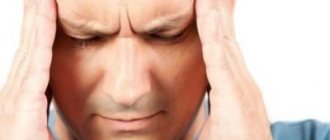- home
- Health
It is important for a smoker to know that combining VSD and smoking is dangerous - after all, with this disease, the entire cardiovascular system suffers, and harmful addiction puts a lot of strain on it.
VVD (vegetative-vascular dystonia) is a very common disorder. In modern medicine, it is considered most rational to consider vegetative-vascular dystonia not as an independent disease, but as a set of various symptoms that are caused by ailments of different organs. There are no exact signs of dystonia, just as the specific cause of its occurrence is not known - here we can only talk about factors contributing to its development.
All this complicates the diagnosis. Only a doctor, after a thorough examination and exclusion of all other diseases, can diagnose vegetative-vascular dystonia and know how it will develop in a particular case.
Parts of the nervous system
The nervous system consists of somatic, i.e. conscious, subject to the will of a person, and vegetative, regulating functions of the body at the unconscious level of parts
The autonomic part of the nervous system - the ANS - has 2 very important interconnected sections:
- sympathetic (SNS);
- parasympathetic (PNS).
Sympathetic:
- increases heart contractions;
- dilates the bronchi;
- dilates the pupil;
- increases heart rate;
- increases breathing;
- activates sphincters;
- increases muscle tone, etc.
Parasympathetic:
- weakens heart contractions;
- constricts the bronchi and pupil;
- slows heart rate and breathing;
- inhibits sphincter activity;
- relaxes muscles, etc.
Both departments work in tandem, affecting the same organs in a balanced manner, but in different ways.
A failure—an imbalance—in the autonomic nervous system occurs when one department begins to dominate another.
Consequences of addiction in VSD
Among them:
- atherosclerosis;
- myocardial infarction;
- vasospasm;
- oxygen starvation of organs and tissues;
- hypertension;
- cardiac ischemia.
Smoking with this disorder is also dangerous because it leads to an increase in cholesterol levels. People suffering from vegetative-vascular dystonia are more prone to atherosclerosis, in which cholesterol plaques form on the veins. With atherosclerosis, blood flow in the vessels of the heart becomes difficult. The most dangerous consequence of smoking during VSD is a heart attack. Atherosclerosis, which causes complications, can be fatal. If a person is diagnosed with “Vegetative-vascular dystonia,” his heart is vulnerable. To avoid other pathologies associated with this organ, you need to quit smoking.
This bad habit increases the spasm of the heart muscle. After smoking cigarettes, this muscle begins to work harder. Against the background of this problem, vasospasm may occur. The duration of such a spasm is 30 minutes. Smoking makes the veins less elastic, and they are constantly subject to spasms. The result is a disruption in the blood flow of the organs, and, as we have already said, they experience oxygen starvation.
All of these processes increase the risk of heart attack. A dangerous consequence of smoking during VSD can be hypertension. A smoker with vegetative-vascular dystonia may develop ischemic heart disease. It is important to say that smoking with VSD impairs respiratory functions (vegetative-vascular dystonia itself is accompanied by respiratory failure). The patient periodically feels short of air and finds it difficult to inhale.
Cigarette smoke is dangerous to the respiratory system. In particularly severe cases, airway obstruction occurs. A bad habit with VSD worsens the functioning of the lungs and bronchi. An important symptom of VSD is tachycardia: the disease is characterized by rapid heartbeat. With tachycardia, the heart muscle contracts quickly: up to 135 times per minute! This symptom of VSD can cause another cardiovascular disease. Smoking in this case aggravates the situation: the “new” disease develops faster.
The dangers of smoking
Smoking with vegetative-dependent disorders can be not only harmful, but also dangerous. If there are no cardiac manifestations of VSD, then this is only a very unpleasant disorder. But in cases where the cardiovascular system suffers, the disorder, according to doctors, becomes life-threatening.
In people who smoke, the condition of blood vessels is usually poor.
Even to a heavy smoker who does not suffer from autonomic disorder, many of the symptoms are familiar - as a result of smoking. Because many signs of smoking and VSD coincide, a smoker may not pay attention to them for a very long time and consult a doctor only in the later stages.
Your Narcologist warns: psychological characteristics of smoking and VSD
A person's emotional state affects his physical health. An example of this is smokers.
Their dependence on nicotine is so strong that the absence of a cigarette can cause:
- anxiety;
- causeless fear;
- panic;
- depression.
For many, these reasons make it impossible for them to give up their addiction.
A heavy smoker who also has VSD seriously risks his health. His chronic diseases are aggravated, and new pathologies are formed; this is a fundamental factor not to combine smoking and vegetative-vascular dystonia.
Tobacco smoking and disorder
A smoker with VSD should take into account some facts:
- His heart beats 80-90 times per minute at rest. This is faster than normal (60 to 100 beats/min). A rapid heartbeat prevents the heart from filling with enough blood.
- Carbon monoxide enters the body along with cigarette smoke. It reduces the amount of oxygen needed for the normal functioning of the body's organs. The heart especially suffers from “lack of air.”
- Nicotine reduces the hormone prostacyclin. This compound is formed mainly in the cardiovascular system and protects it from the formation of blood clots, from vasoconstriction, and reduces blood pressure.
- Nicotine delivers its first blow to nerve cells.
- The human body contains a special element - acetylcholine. It is used by the nervous system as a basic substance to control the cells and tissues of the body. Nicotine is similar to it in one leading function - impulse transmission. When smoking, acetylcholine is replaced by nicotine. The nervous system responds to the action of the latter - it becomes active and comes into an excited state. This not only leads to the depletion of natural reserves of acetylcholine, but also negatively affects its production, and in the future it is no longer enough to activate nerve impulses; “help” is needed in the form of nicotine. A deficiency of acetylcholine leads to irritability, poor memory, lethargy, difficulty thinking, slow reactions, etc.
- Smokers have increased blood clotting. This risks the formation of blood clots, which can lead to a heart attack or stroke.
- Cholesterol in the blood is elevated, which leads to the formation of atherosclerotic plaques, which interfere with the normal blood supply to the heart. This is fraught with ischemic disease or heart attack.
All these factors negatively affect even a “healthy” smoker. Is it possible to smoke with VSD? This is extremely undesirable, because the disease itself, without smoking aggravating it, negatively affects the heart and blood vessels, and with vegetative-vascular dystonia, addiction is not just harmful to health, it is dangerous.
What should a smoker do if he has VSD?
To treat VSD, it is necessary to eliminate the causes of the pathology, including quitting smoking.
Smoking is one of the reasons for the development of vegetative dystonia, because nicotine negatively affects the state of the nervous system. After the development of VSD, each cigarette contributes to the worsening of the disease and exacerbation of its manifestations. To get rid of the problem and eliminate all the symptoms of VSD, you need to adjust your lifestyle in a certain way, eliminate all the causes of the disease, and first of all give up bad habits.
Quitting smoking eliminates the signs of VSD over time.
There is an opinion that quitting smoking has no effect, and symptoms of VSD still appear. This is partly true, because it takes time to normalize the operation of all systems. Gradually, the body will be cleansed of toxic substances that came with tobacco smoke, blood supply to tissues will improve, and the nervous system will be restored and strengthened. VSD is a complex pathology and you should not expect quick healing.
Getting rid of panic attacks and tobacco addiction
A modern arsenal of psychopharmacological agents will help you get rid of panic attacks, as well as smoking. First of all, anti-anxiety drugs are used to alleviate both the course of VSD and withdrawal symptoms (there are many of them, we will only mention Stresam and Buspirone). Next come special drugs aimed specifically at combating smoking, and a gradual reduction in dosage is recommended. Champix is especially good. In addition, real alternatives are nicotine patches, aerosols and electronic cigarettes, which ensure a smoother flow of nicotine into the body.
However, not everyone is ready to take a series of potent drugs with a bunch of side effects, not to mention the fact that they are fundamentally unable to solve the deepest problems based on goal setting and control of anxiety levels. Only a competent professional psychologist can help here, whose support will also be needed during the course of anti-tobacco therapy. A trusted specialist is always ready to provide comprehensive support, from solving the most difficult problems to issues of further self-development and creative, as well as professional and personal growth.
Specific cases
You can clearly:
- assess the level of work in practice;
- look at customer reviews;
- enjoy podcasts;
- try out exercises and meditations.
We presented one such exercise here:
High-quality psychotherapy and guiding the client until tangible results are achieved, thanks to a methodical approach, helps to work through problems effectively and in the shortest possible time. VSD, panic attacks, nicotine addiction, as well as addiction to grass should not put an end to it and interfere with movement towards your life goal. After all, it is the lack of correct goal setting that is the starting point and predetermines the development of neurosis.
How does smoking affect the heart in VSD?
As we found out earlier, nicotine affects the walls of blood vessels, and carbon monoxide limits the flow of oxygen into the body. As a result, all resources of the cardiac system gradually begin to deplete.
One of the dangerous symptoms is increased blood clotting, which can inevitably lead to stroke, myocardial infarction or pulmonary infarction. Increased nicotine levels lead to increased cholesterol levels, and this, in turn, leads to the formation of atherosclerotic plaques.
Experts say that the combination of VSD and smoking sooner or later leads the smoker to a hospital bed in the cardiology department.
What do habits and illness have in common?
What do smoking and VSD have in common? First of all, you should consider what changes in the body occur after smoking a cigarette due to nicotine entering the body.
How does the body react to smoking a cigarette? After smoking one cigarette, the following vegetative changes occur in the human body:
- The heartbeat quickens and pulsation appears in the temples, blood pressure rises due to the release of adrenaline and vasospasm.
- Possible severe agitation or PA.
- In some cases, arrhythmia appears.
- Dizziness occurs when you puff too hard.
- It is possible to develop a headache due to spasm of cerebral vessels.
These symptoms get worse if you smoke 2 or more cigarettes one after another.
Reviews from doctors about the dangers of smoking indicate that it provokes not only metabolic disorders, which can lead to atherosclerosis of blood vessels, but smoking also causes a sharp spasm of the body’s blood vessels, which leads to impaired blood circulation and the appearance of dizziness, a feeling of “interruptions” in the functioning of the heart , headache. Therefore, smoking with VSD can intensify symptoms and aggravate the course of the disease.
Smoking during VSD and panic attacks: main points
- The symptoms of vegetative-vascular dystonia, in essence, are only a more erased form of panic attacks.
- VSD is a predisposition to panic attacks. Panic attacks are the result of an abnormally acute reaction to stress.
- Smoking provokes panic attacks and this manifests itself especially sharply in people with a predisposition, that is, vegetative-vascular dystonia.
- The term VSD itself is fundamentally incorrect from the point of view of pathogenesis. It does not apply to blood vessels, affecting only the neurotransmitter background and hormones such as cortisol, thyroxine and DHEA.
Getting rid of a bad habit
Quitting smoking, especially if you have been smoking for more than one year, will be very difficult. But what you get in return is incomparably greater. One of the main benefits is health. How to do this as safely as possible for the body?
The first thing that can help is a psychological attitude. A person must realize that giving up a bad habit is what he needs first of all. Auxiliary products can be chewing gum, tablets, patches, and candies.
If you have VSD, neurosis, or PA while quitting cigarettes, it is best to seek help from a specialist who will prescribe the correct treatment.
When quitting smoking with VSD, the help of a psychologist or psychotherapist will be important. It all depends on how the disease progresses and what consequences it brings.
If the cause of VSD was quitting cigarettes, then the symptoms will go away after just one month.
What to remember when quitting cigarettes:
- Drink as much clean water as possible to remove toxic substances accumulated during smoking from the body.
- During therapy, do not drink coffee or alcohol. These substances dull the sense of self-control.
- Walk more in the fresh air.
- Regular physical activity will help greatly. They help fight insomnia and reduce symptoms of VSD.
If smoking is the cause of VSD, you should quit such a bad habit immediately. Learn to enjoy life as it comes. Love and take care of yourself.



